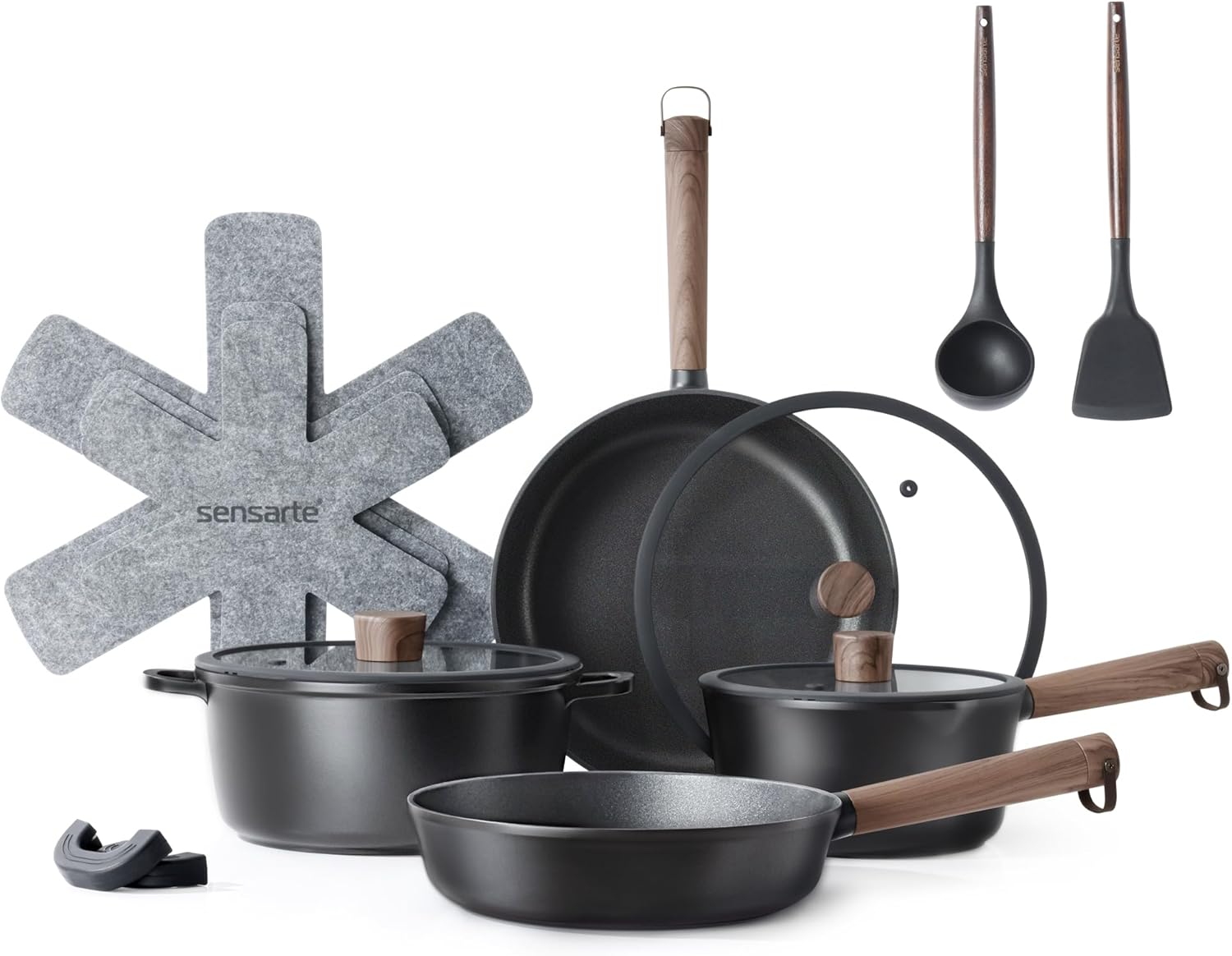Welcome to KitchenBap! Whether you’re just learning to cook or are looking to sharpen your kitchen skills, this beginner’s guide is designed to help you navigate the essentials of setting up your kitchen, understanding basic cooking techniques, and building confidence in the kitchen. With the right tools, ingredients, and techniques, you can master cooking at home and impress yourself (and others) with your culinary creations.
1. Setting Up Your Kitchen: The Essentials
Before you can start cooking, you need to make sure you have the right equipment. You don’t need to go out and buy every gadget and appliance, but there are a few key essentials that will make your cooking easier and more enjoyable.
Essential Kitchen Tools for Beginners:
- Good Knife Set: A sharp chef’s knife is one of the most important tools in any kitchen. A paring knife and serrated knife are also great additions.
- Cutting Board: Choose a sturdy, non-slip cutting board. Bamboo or plastic boards are easy to maintain.
- Cookware: A good set of pots and pans is essential. Start with a basic set including a non-stick frying pan, a saucepan, and a large stockpot.
- Measuring Cups and Spoons: Accuracy is key, especially when baking or following recipes. Invest in a set of dry and liquid measuring cups and spoons.
- Mixing Bowls: A set of mixing bowls in various sizes will come in handy for preparing ingredients and mixing up recipes.
- Utensils: Basic utensils like spatulas, wooden spoons, tongs, and a whisk will help with food preparation and cooking.
Setting Up Your Pantry:
Stocking your pantry with basic ingredients can help you start cooking right away without needing to run to the store for every recipe. Here are some beginner-friendly pantry staples:
- Spices and Herbs: Salt, pepper, garlic powder, paprika, dried oregano, and basil are great starting points.
- Oils and Vinegars: Olive oil, vegetable oil, and balsamic vinegar are versatile and great for cooking and dressing.
- Grains and Starches: Rice, pasta, quinoa, and potatoes are great staples for quick meals.
- Canned Goods: Stock up on canned tomatoes, beans, and broth for making soups, stews, and sauces.
- Baking Essentials: Flour, sugar, baking powder, and yeast are the building blocks of baking.
2. Basic Cooking Techniques for Beginners
Cooking doesn’t have to be complicated. Once you understand a few key techniques, you’ll be able to follow any recipe with confidence.
Basic Cooking Techniques You Should Know:
- Boiling: A fundamental technique for cooking pasta, vegetables, and grains. Bring a large pot of water to a boil, then add your ingredients and cook until tender.
- Sautéing: This method involves cooking food in a small amount of oil or butter over medium-high heat. It’s perfect for vegetables, meats, and seafood.
- Roasting: Roasting uses dry heat to cook food, usually in the oven. It’s ideal for vegetables, meats, and poultry. Simply season your food and place it in a preheated oven until cooked through.
- Braising: Braising is a slow-cooking technique where meat is browned and then cooked in a small amount of liquid over low heat for an extended period. This method is great for tougher cuts of meat.
- Grilling: Whether you’re using a gas grill or stovetop grill pan, grilling gives food a delicious smoky flavor. It’s perfect for vegetables, chicken, and seafood.
- Baking: Baking is the art of cooking food in an oven, typically using dry heat. This technique is best for breads, cakes, cookies, and casseroles.
Tips for Success in the Kitchen:
- Read the Recipe Thoroughly: Before you begin cooking, make sure you understand the recipe instructions. Gather all your ingredients and tools so you’re prepared for each step.
- Use Fresh Ingredients: Whenever possible, use fresh produce, meats, and herbs. They’ll enhance the flavor and quality of your meals.
- Practice Knife Skills: Proper knife skills make cooking safer and more efficient. Take your time and practice basic cuts like dicing, slicing, and chopping.
- Start Simple: Don’t overwhelm yourself with complicated recipes. Start with easy dishes that require fewer ingredients and techniques, like pasta with marinara sauce, scrambled eggs, or stir-fried vegetables.
3. Understanding Ingredients and Flavor Profiles
Understanding how to balance flavors and use the right ingredients will elevate your cooking to the next level. Here’s a brief overview of common ingredients and how to combine them to create delicious meals.
Building Flavors:
- Salt and Pepper: These are the foundation of seasoning. Salt enhances flavors, while pepper adds depth and heat. Always taste your dish as you cook and adjust the seasoning as needed.
- Acid: Ingredients like vinegar, lemon juice, and lime juice add brightness and balance to dishes, especially when paired with rich or fatty foods.
- Fat: Oils, butter, and cream are key to adding richness to dishes. They also help with cooking and browning.
- Sweetness: A small amount of sugar or honey can balance out acidity and bitterness in dishes like sauces, marinades, or dressings.
- Herbs and Spices: Fresh and dried herbs (like basil, thyme, rosemary) and spices (like cumin, paprika, cinnamon) bring complexity and aroma to dishes.
Flavor Pairings:
- Tomatoes and Basil: A classic combination found in Italian cooking. Tomatoes’ acidity is balanced by the fresh, herbal flavor of basil.
- Lemon and Garlic: A flavor pairing perfect for seafood, poultry, and vegetables.
- Salt and Sweetness: Salt can bring out the natural sweetness in fruits, desserts, or roasted vegetables. A sprinkle of sea salt on chocolate is a popular sweet-savory combination.
4. Easy Beginner-Friendly Recipes to Try
Once you’re equipped with the right tools and basic techniques, it’s time to try your hand at some easy recipes. Here are a few beginner-friendly dishes that will help you build confidence in the kitchen:
- One-Pot Pasta: This dish is simple and requires minimal preparation. Just toss pasta, a few vegetables, and your favorite sauce into one pot, and let everything cook together.
- Stir-Fry Vegetables: Stir-fries are fast, flavorful, and customizable. You can mix and match vegetables, proteins (like chicken or tofu), and sauces to create your perfect dish.
- Scrambled Eggs with Toast: Scrambled eggs are a basic skill every beginner should learn. Pair them with buttered toast for a quick and satisfying meal.
- Baked Chicken Breasts: Simply season chicken breasts with olive oil, salt, pepper, and your favorite herbs, then bake them in the oven until cooked through.
- Pancakes: Pancakes are an easy and fun recipe to try. All you need is flour, eggs, milk, sugar, and baking powder for a fluffy and delicious breakfast.
5. Cleaning and Maintaining Your Kitchen
A clean kitchen is essential for both safety and efficiency. Here are a few tips for keeping your kitchen clean and organized:
- Clean as You Go: Tidy up after each step of cooking to avoid a big mess at the end. Wash utensils, bowls, and pans as you use them.
- Use Cutting Boards: Always use cutting boards when chopping vegetables, meat, or fish. This prevents cross-contamination and keeps your countertops clean.
- Store Ingredients Properly: Store dry goods in airtight containers to keep them fresh longer. Refrigerate perishable items promptly.
- Maintain Your Knives: Keep your knives sharp by regularly honing the blades with a sharpening tool.
Conclusion: Embrace the Cooking Journey
Cooking is a skill that gets better with practice, so don’t be afraid to make mistakes along the way. Start with simple dishes, use the right tools, and don’t forget to enjoy the process. Soon, you’ll be whipping up delicious meals with confidence and creativity.
At KitchenBap, we’re here to guide you every step of the way. Keep exploring, keep practicing, and most importantly—have fun in the kitchen!



